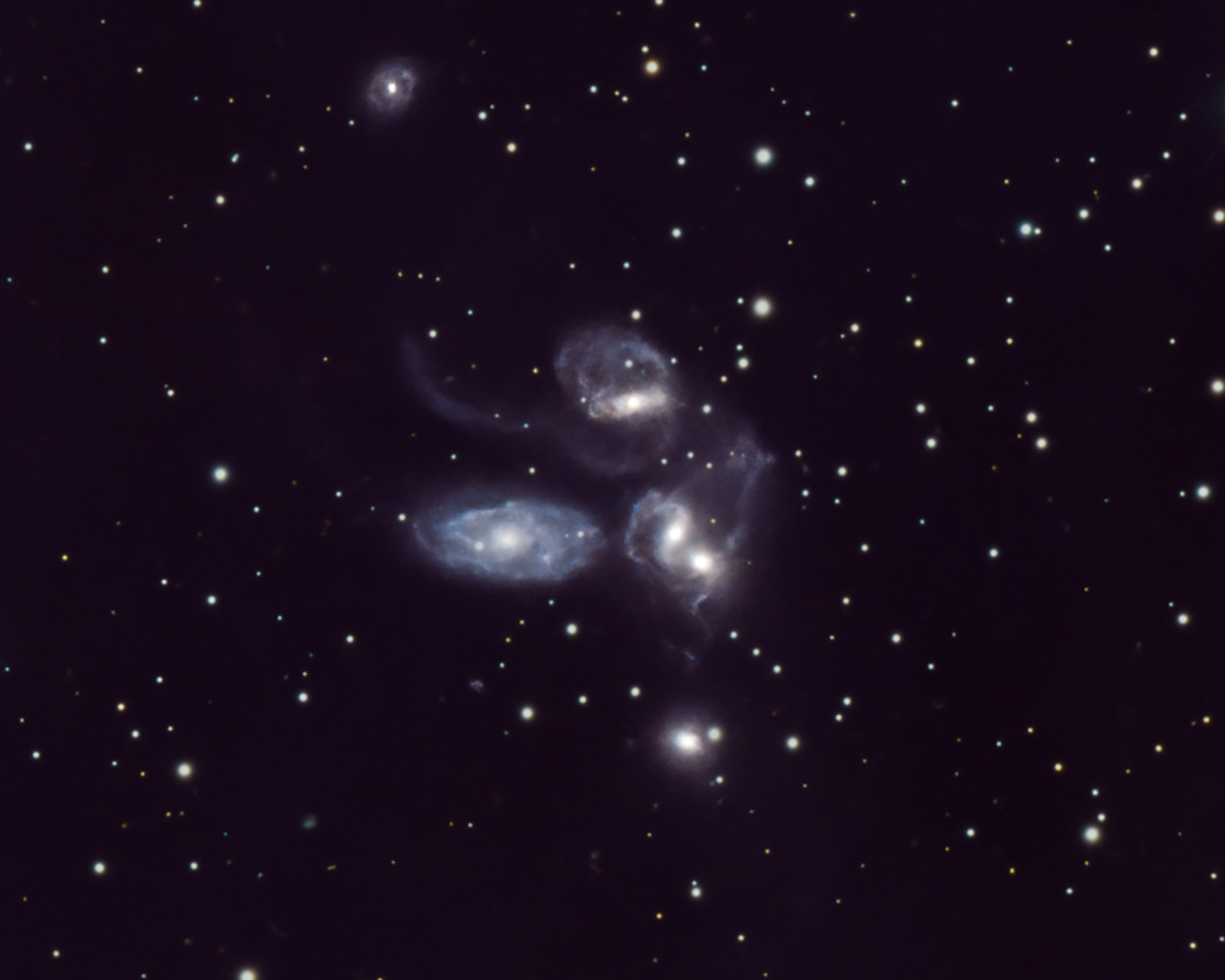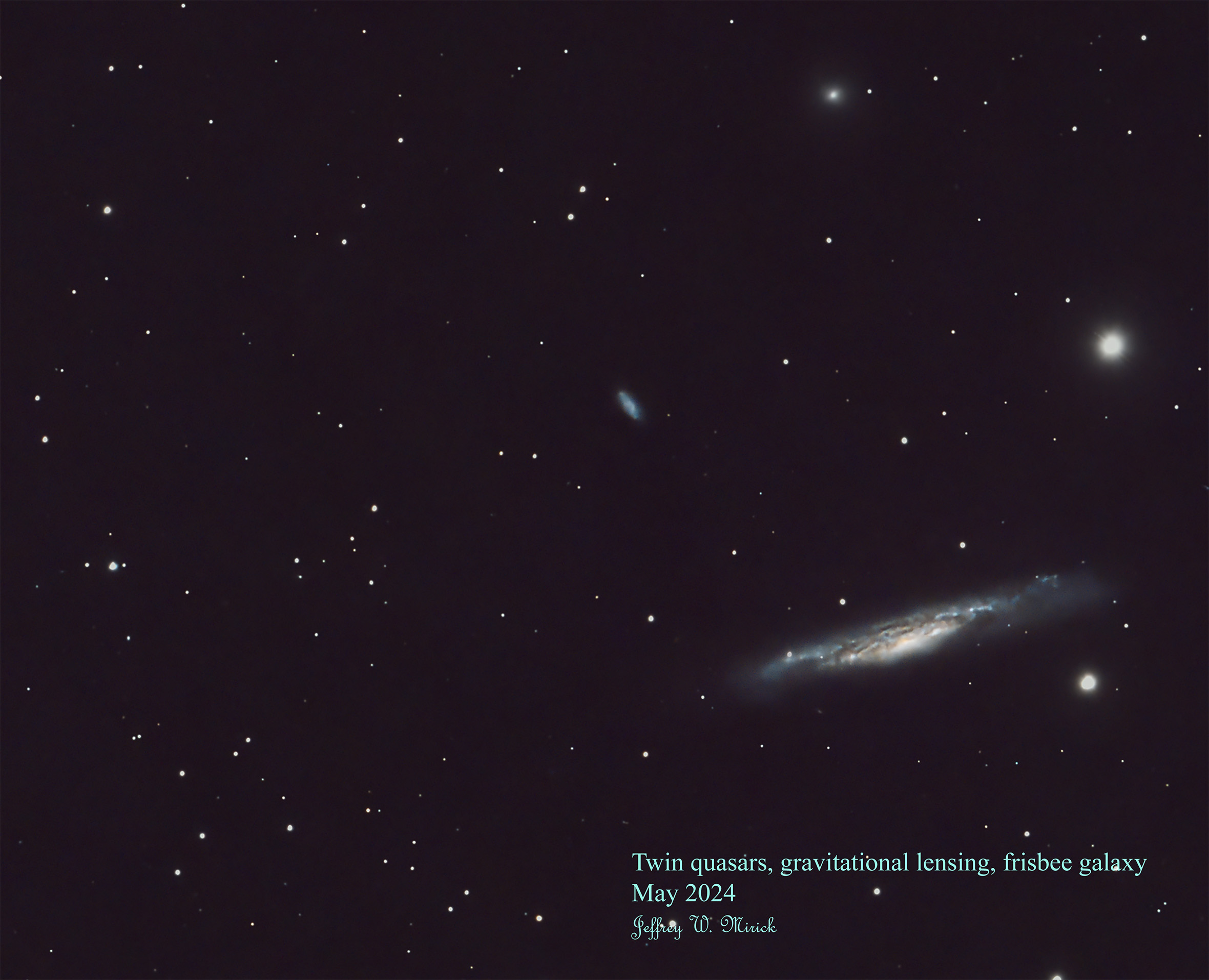| Object | Arp 55, Grasshopper Galaxy, UGC 4881 |
|---|---|
| Date | March 16, 2023 |
| Constellation | Lynx |
| Distance | 527 Million Light Years |
| Magnitude | 15.6 |
| Comments | Galaxy merger |
| Exposure | 28 subs at 5 minutes - total exposure: 2 hours 20 minutes<.td> |
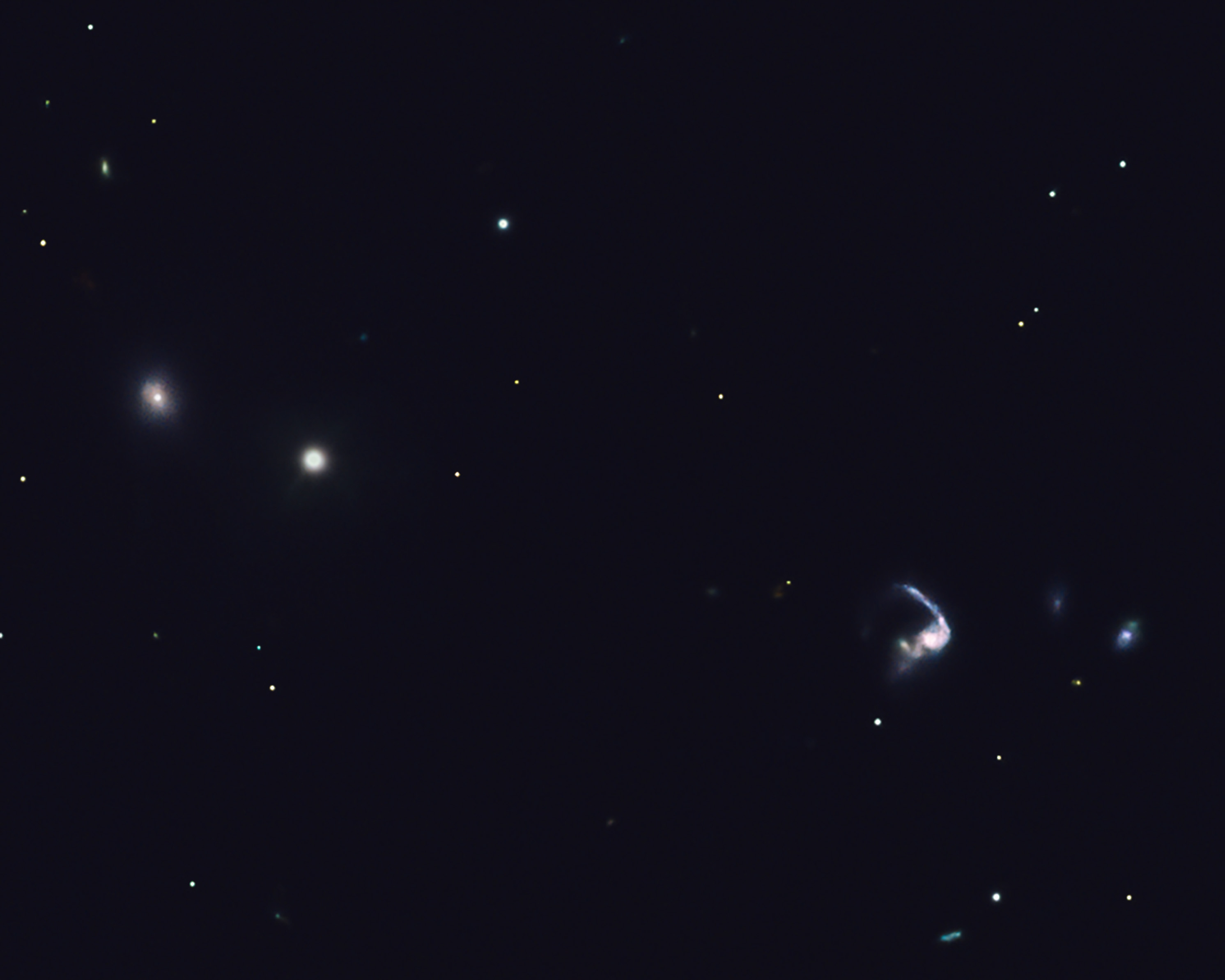
| Object | Arp 65, NGC 90 and NGC 93, upper left of center in image |
|---|---|
| Date | December 20, 2024 |
| Constellation | Andromeda |
| Distance | 335 Million Light Years |
| Magnitude | 13 to 14 |
| Exposure | 72 subs at 2 minutes - total exposure: 2 hours 24 minutes |
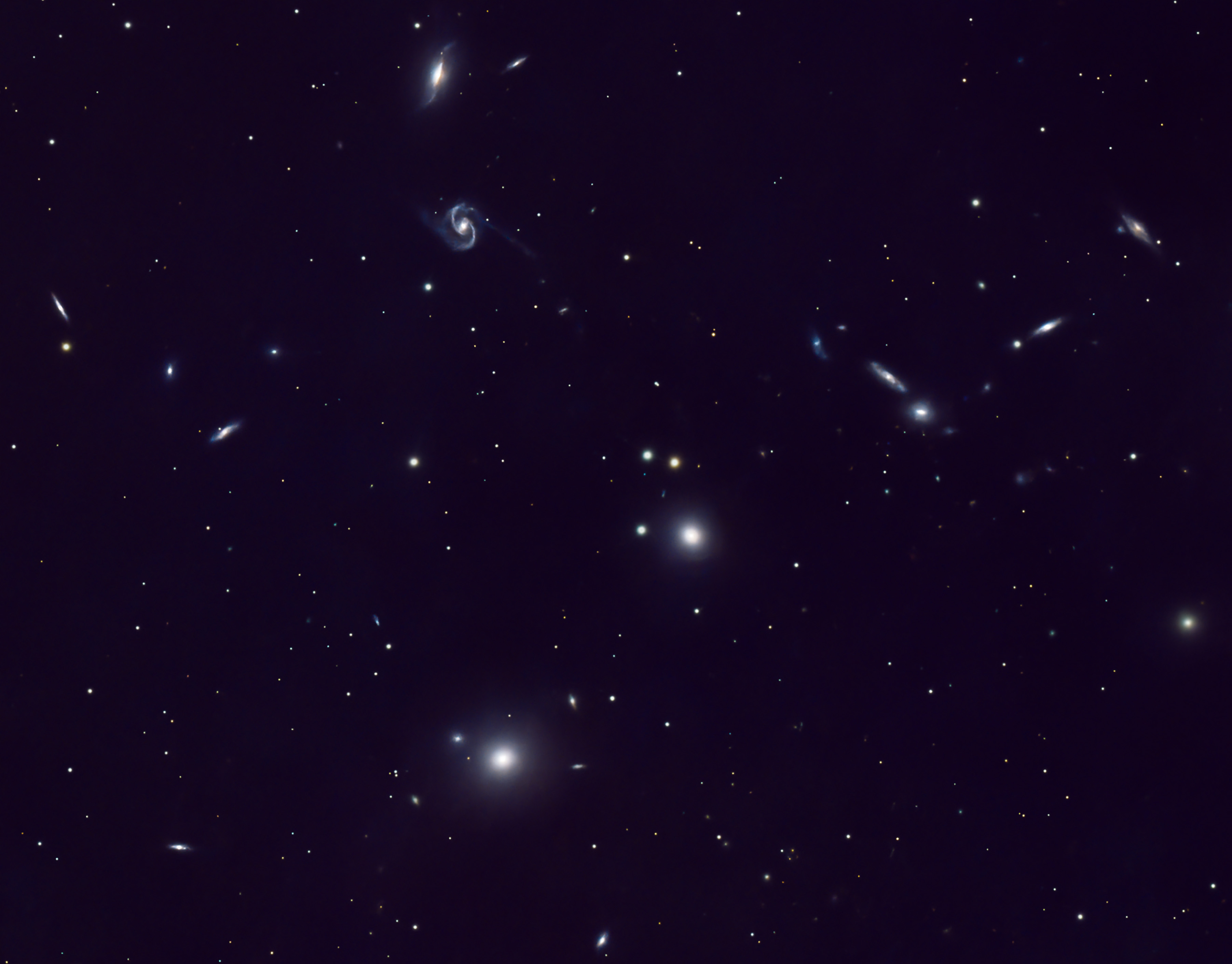
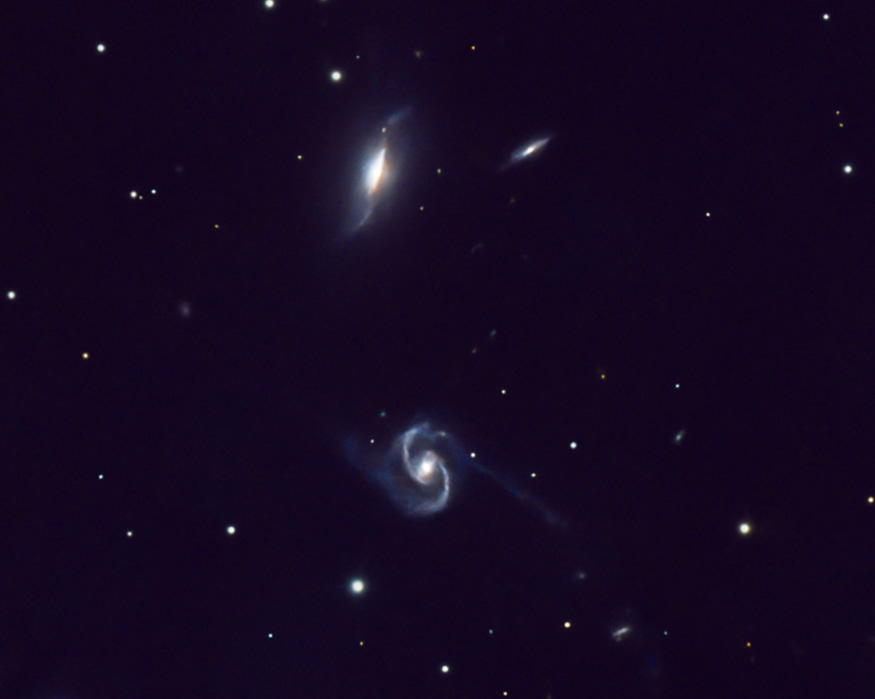
| Object | Arp 85, M51a, NGC 5194 and NGC 5195, Whirlpool galaxy |
|---|---|
| Date | May 11, 2024 |
| Constellation | Canes Venatici |
| Distance | 25 Million Light Years |
| Magnitude | 8.4 |
| Comments | This photo was taken with a Lumix S5 full frame camera with a 600 mm focal length lens at f6.3 and a tracking mount and tripod. NGC 5198 is also visible in the upper right corner at magnitude 13.2 |
| Exposure | 51 subs at 20 seconds, total exposure: 17 minutes |
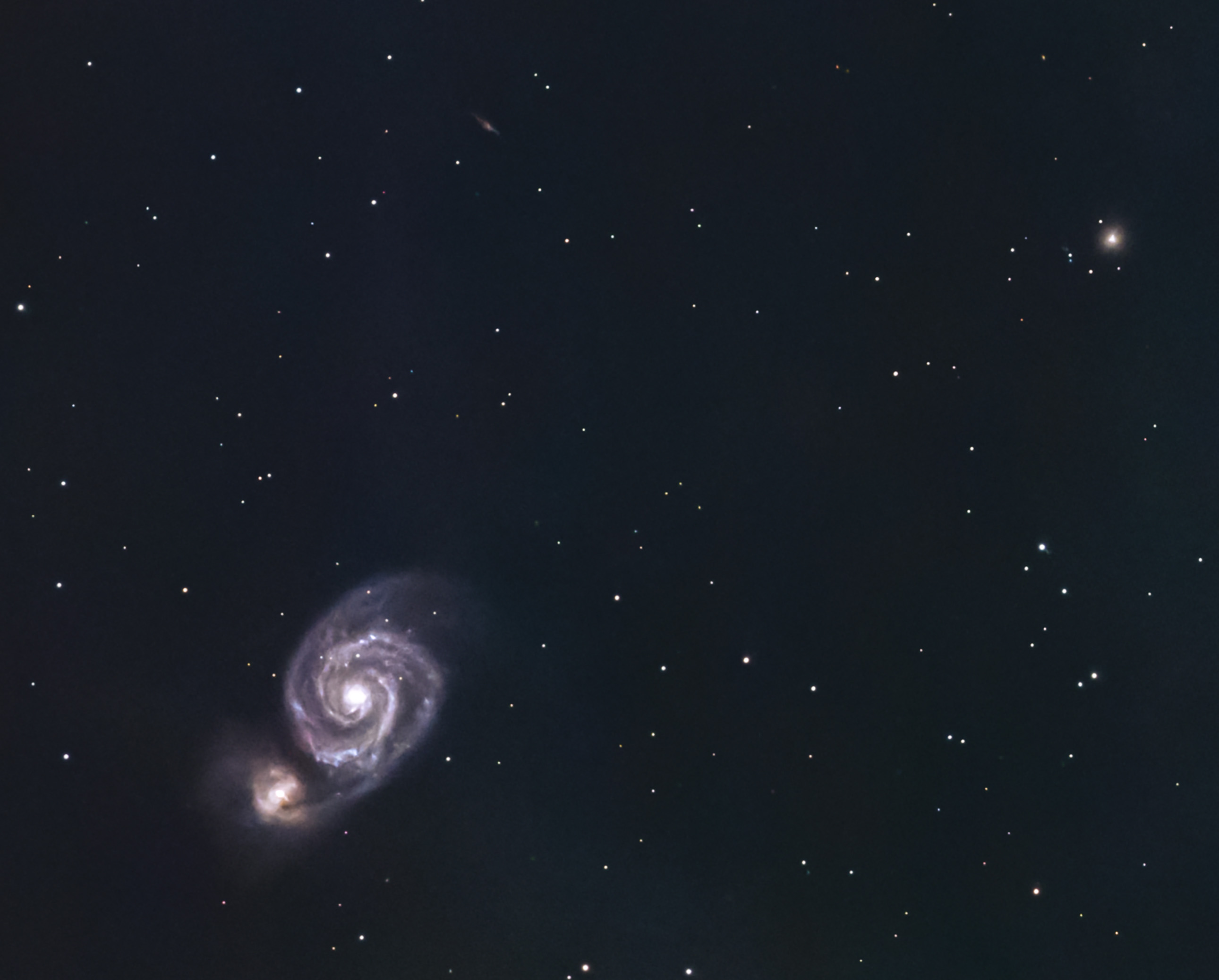
| Object | Arp 94, NGC 3226 and NGC 3227 |
|---|---|
| Date | March 27, 2022 |
| Constellation | Leo |
| Distance | 50 to 60 Million Light Years |
| Magnitude | 10.3 |
| Comments | |
| Exposure | 20 subs at 3 minutes, total exposure: 1 hour |
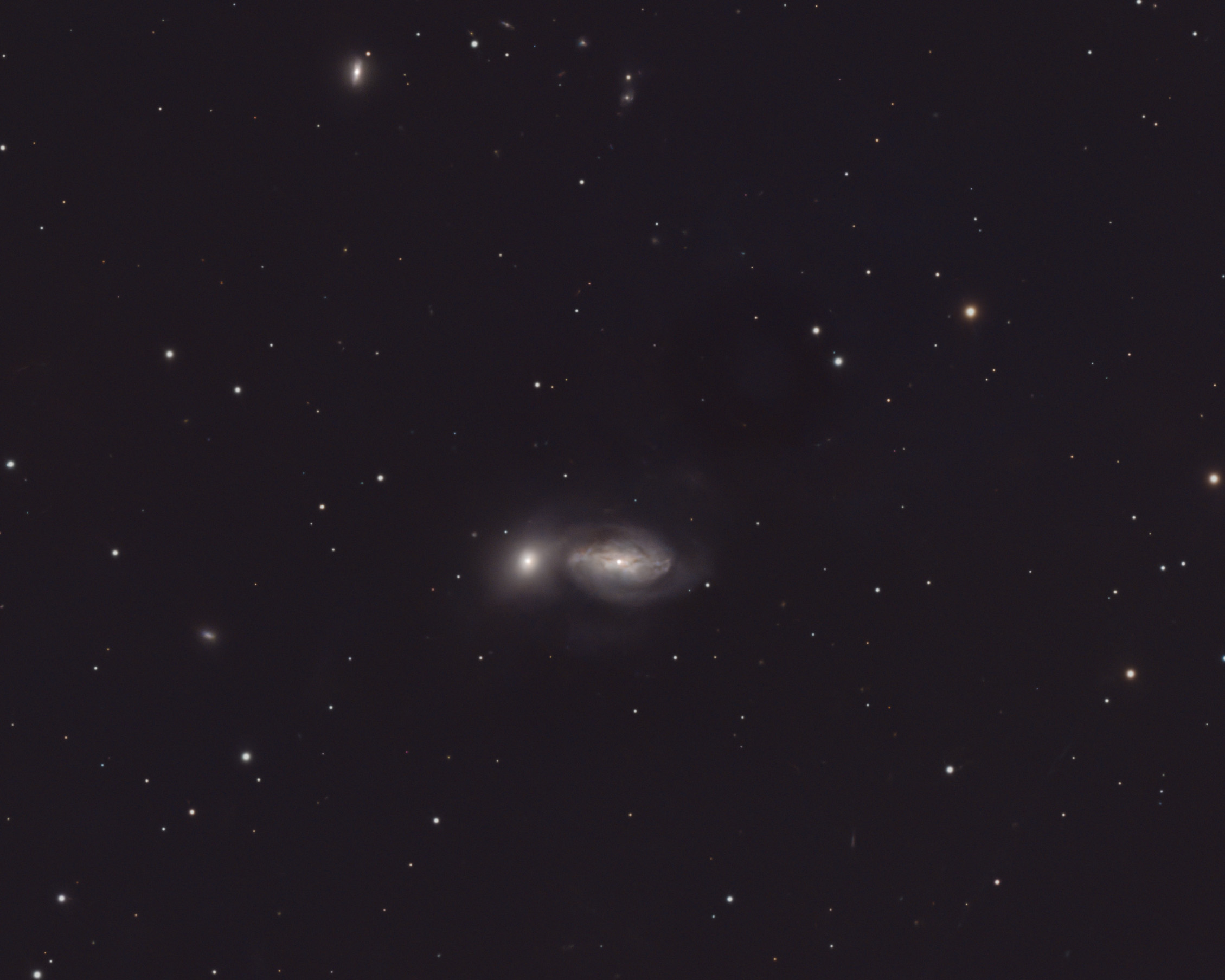
| Object | Arp 116, M60 and NGC 4647 |
|---|---|
| Date | May 4, 2022 |
| Constellation | Virgo |
| Distance | 63 Million Light Years |
| Magnitude | 9.8 and 11.9 |
| Comments | Supernova, M60-UCD1 (ultracompact dwarf galaxy), other neighboring galaixes |
| Exposure | 18 subs at 3 minutes, total exposure: 54 minutes |
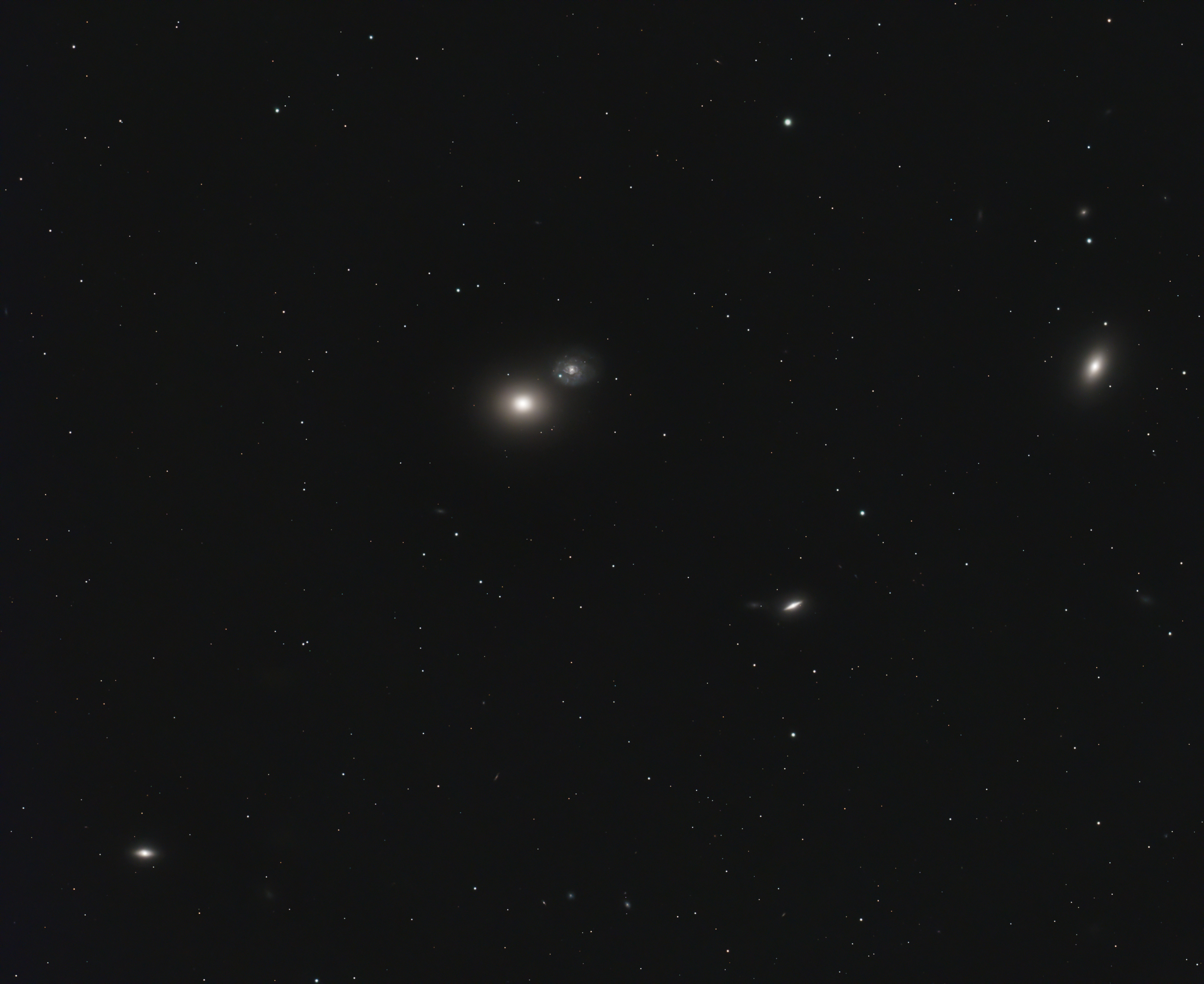

| Object | Arp 120, Eyes Galaxies, NGC 4435 and NGC 4438 |
|---|---|
| Date | March 2025 |
| Constellation | Virgo |
| Distance | 50-60 Million Light Years |
| Magnitude | 10 |
| Comments | Part of the Markarian's chain of galaxies, M84 and M86 visible at magnitude 9 |
| Exposure | 88 subs at 2 minutes, total exposure: 2 hours 56 minutes |
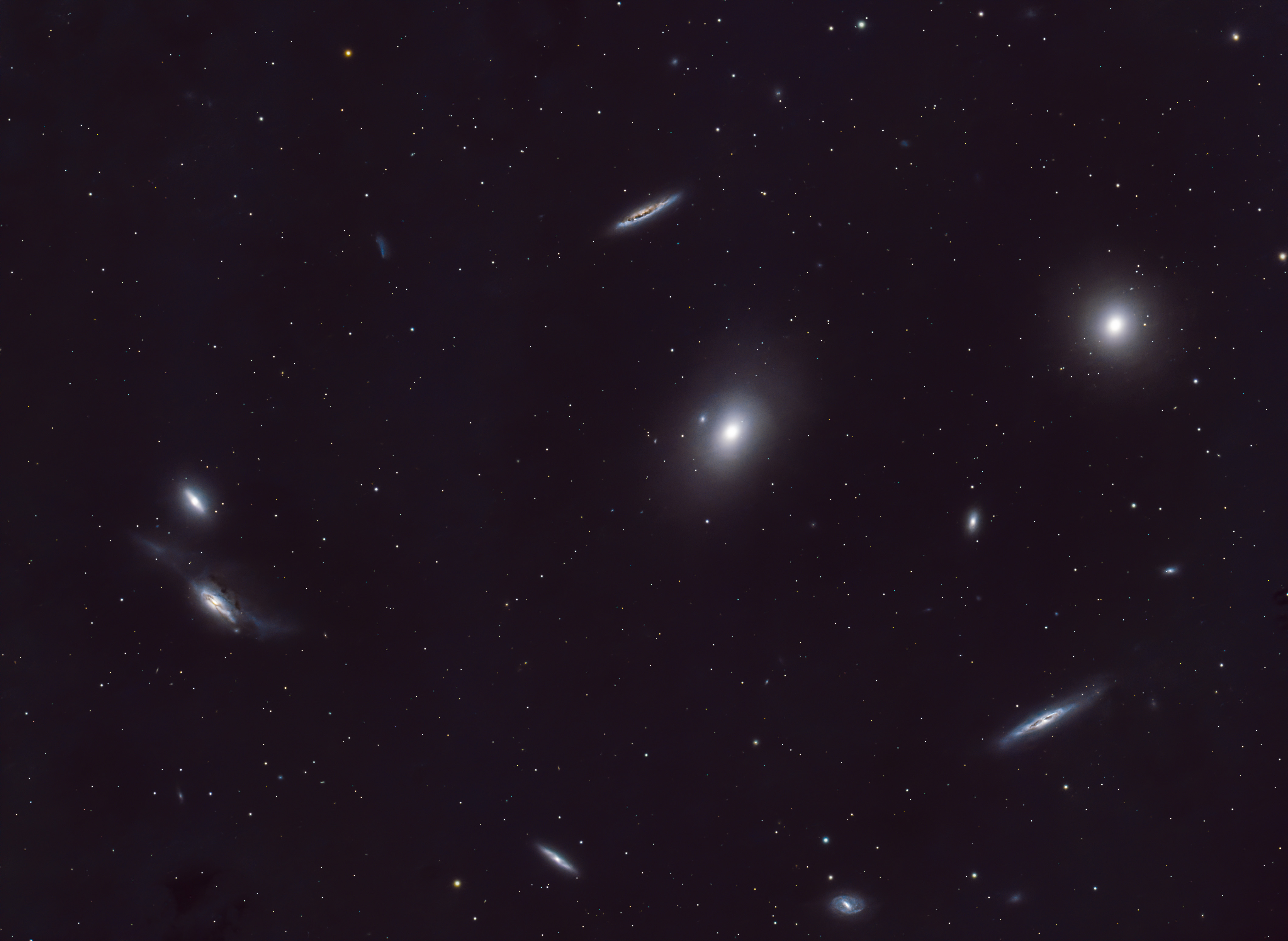

| Object | Arp 142, Penguin (or Porpoise) Galaxy, NGC 2936 |
|---|---|
| Date taken | March 2025 |
| Constellation | Hydra |
| Distance | 352 Million Light Years |
| Magnitude | 12.8 |
| Exposure | 96 subs at 2 minutes, total exposure: 3 hours 12 minutes |
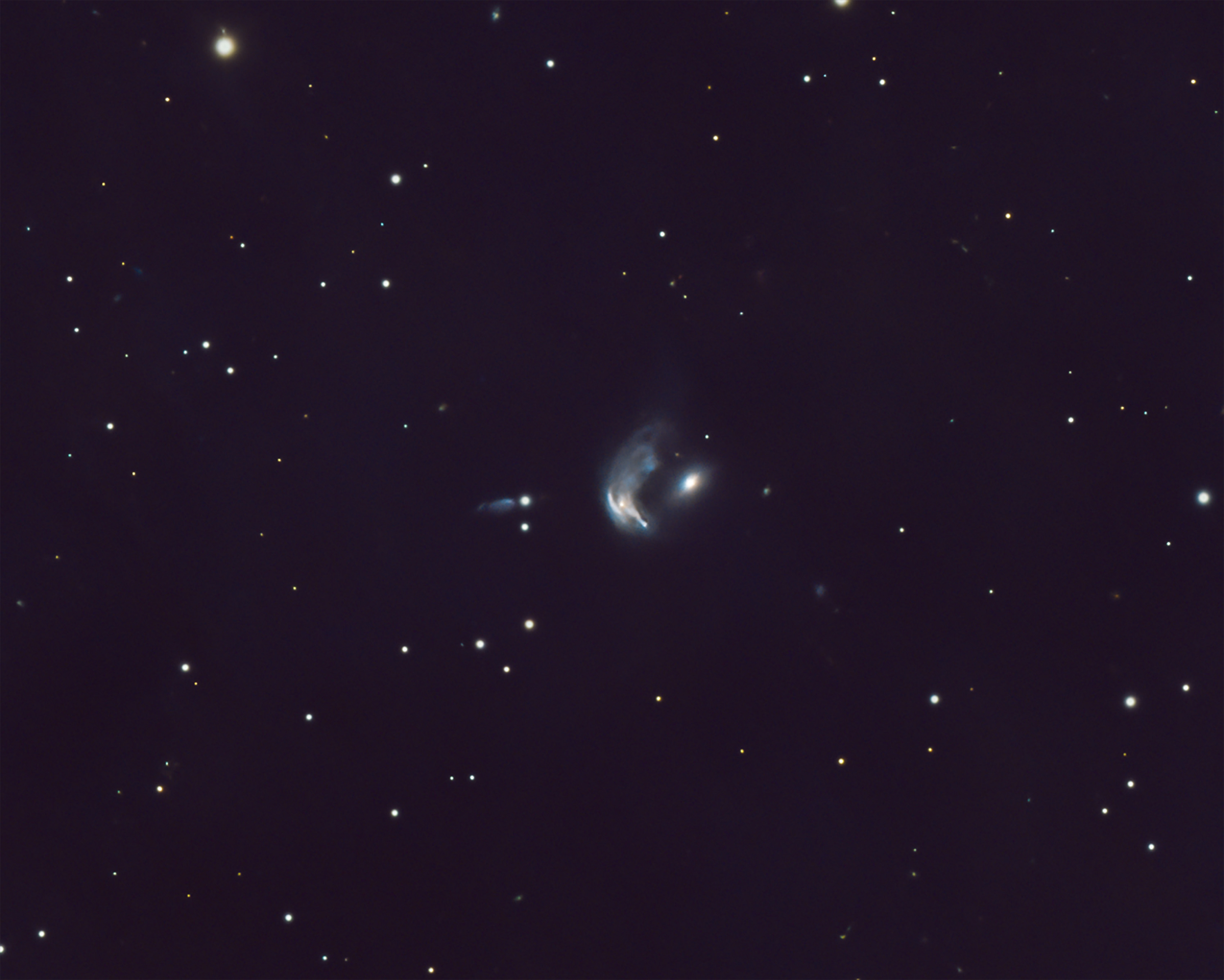
| Object | Arp 143, NGC 2444 and NGC 2445, The Triangle |
|---|---|
| Date | April 2024 |
| Constellation | Lynx |
| Distance | 135 Million Light Years |
| Magnitude | 12.9 |
| Comments | Gain: 1000, Head on collision between 2 galaxies |
| Exposure | 109 subs at 2 minutes, total exposure: 3 hours 38 minutes |
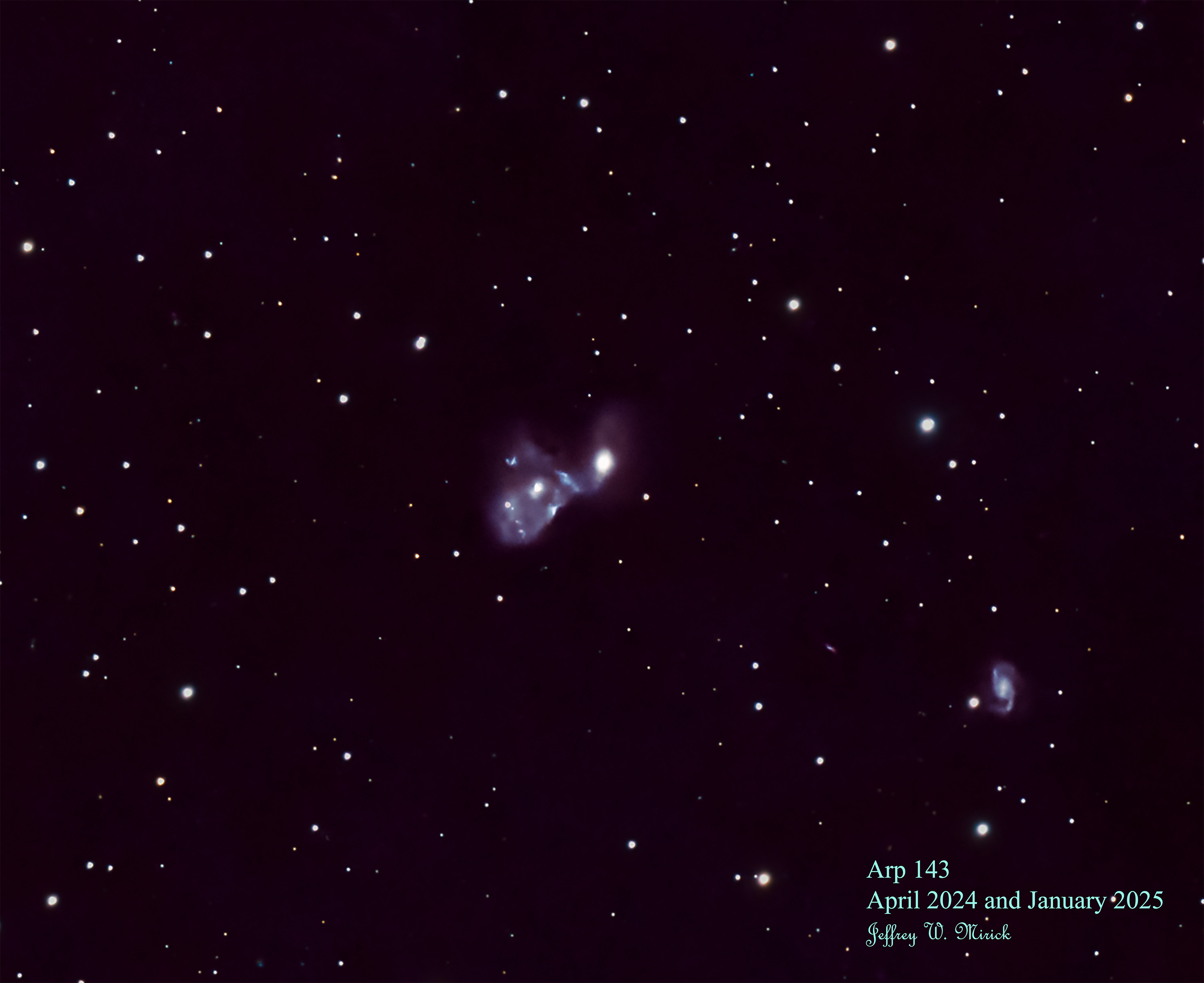
| Object | Arp 147, IC 298, Pair of ring galaxies |
|---|---|
| Date | December 2024 |
| Constellation | Cetus |
| Distance | 440 Million Light Years |
| Magnitude | 14.3 |
| Comments | Interacting ring galaxies |
| Exposure | 121 subs at 2 minutes, total exposure: 4 hours 2 minutes |
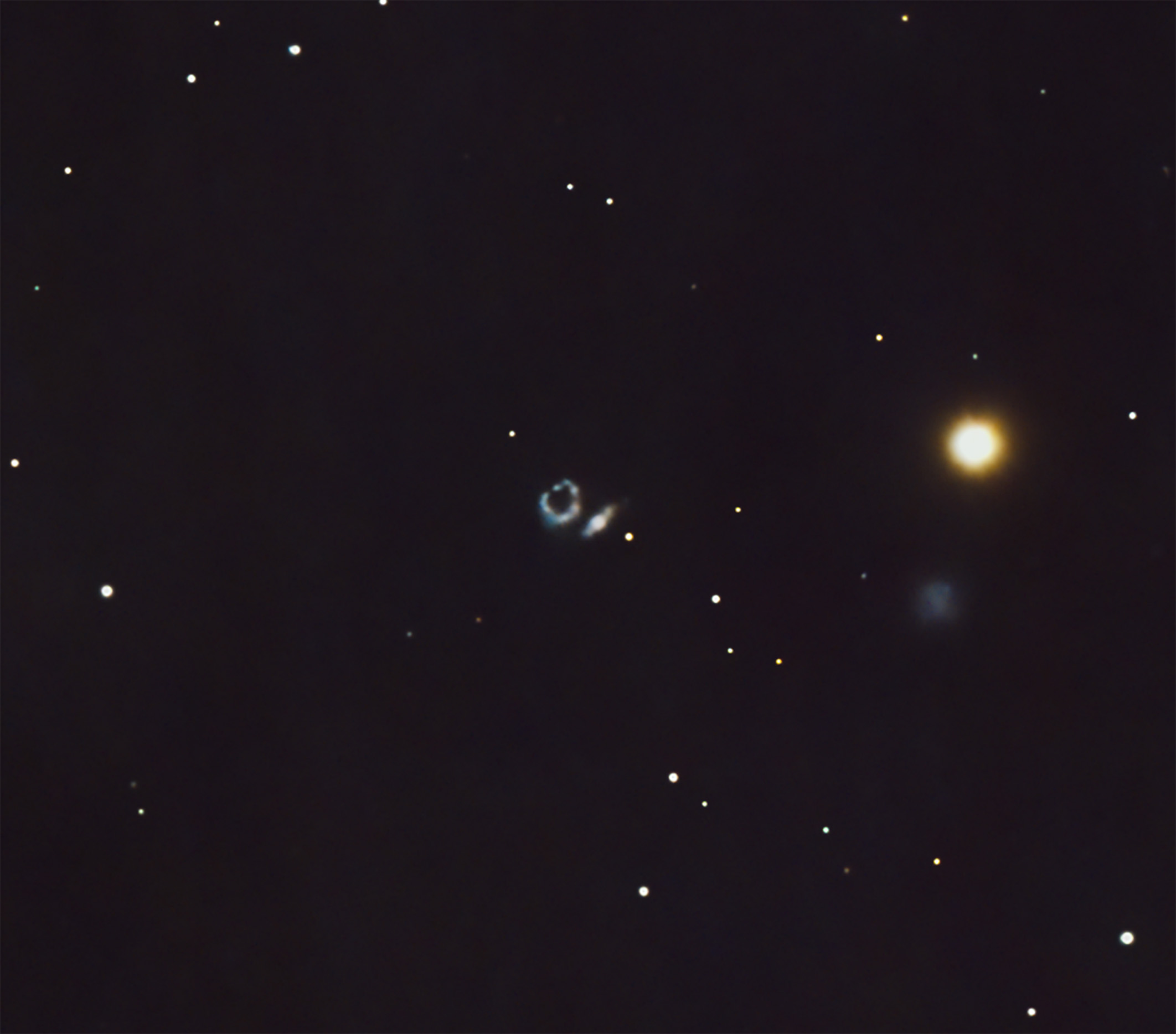
| Object | Arp 148, Mayall's Object |
|---|---|
| Date | February 2025 |
| Constellation | Ursa Major |
| Distance | 450 Million Light Years |
| Magnitude | about 15 |
| Comments | two colliding galaxies |
| Exposure | 77 subs at 2 minutes, total exposure: 2 hours 34 minutes |

| Object | Arp 195, UGC 4653, A trio of interacting galaxies |
|---|---|
| Date | February 2025 |
| Constellation | Ursa Major |
| Distance | 763 Million Light Years |
| Magnitude | 13.6 |
| Comments | trio of colliding galaxies |
| Exposure | 87 subs at 2 minutes, total exposure: 2 hours 54 minutes |
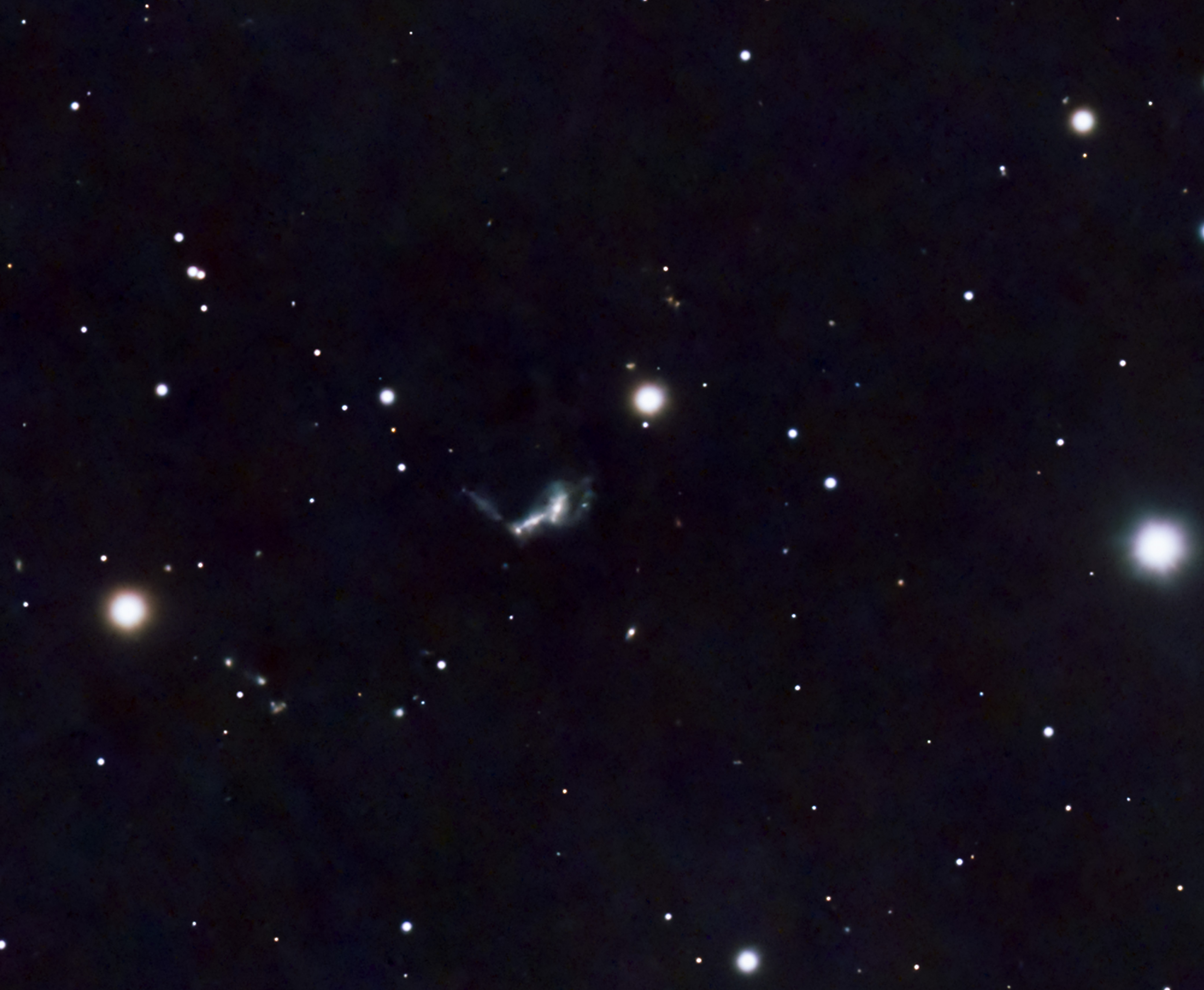
| Object | Arp 271, NGC 5426 and NGC 5427 |
|---|---|
| Date | July 4, 2022 |
| Constellation | Virgo |
| Distance | 127 Million Light Years |
| Magnitude | 11.4 |
| Comments | |
| Exposure | 17 subs at 5 minutes, total exposure: 1 hour 25 minutes |
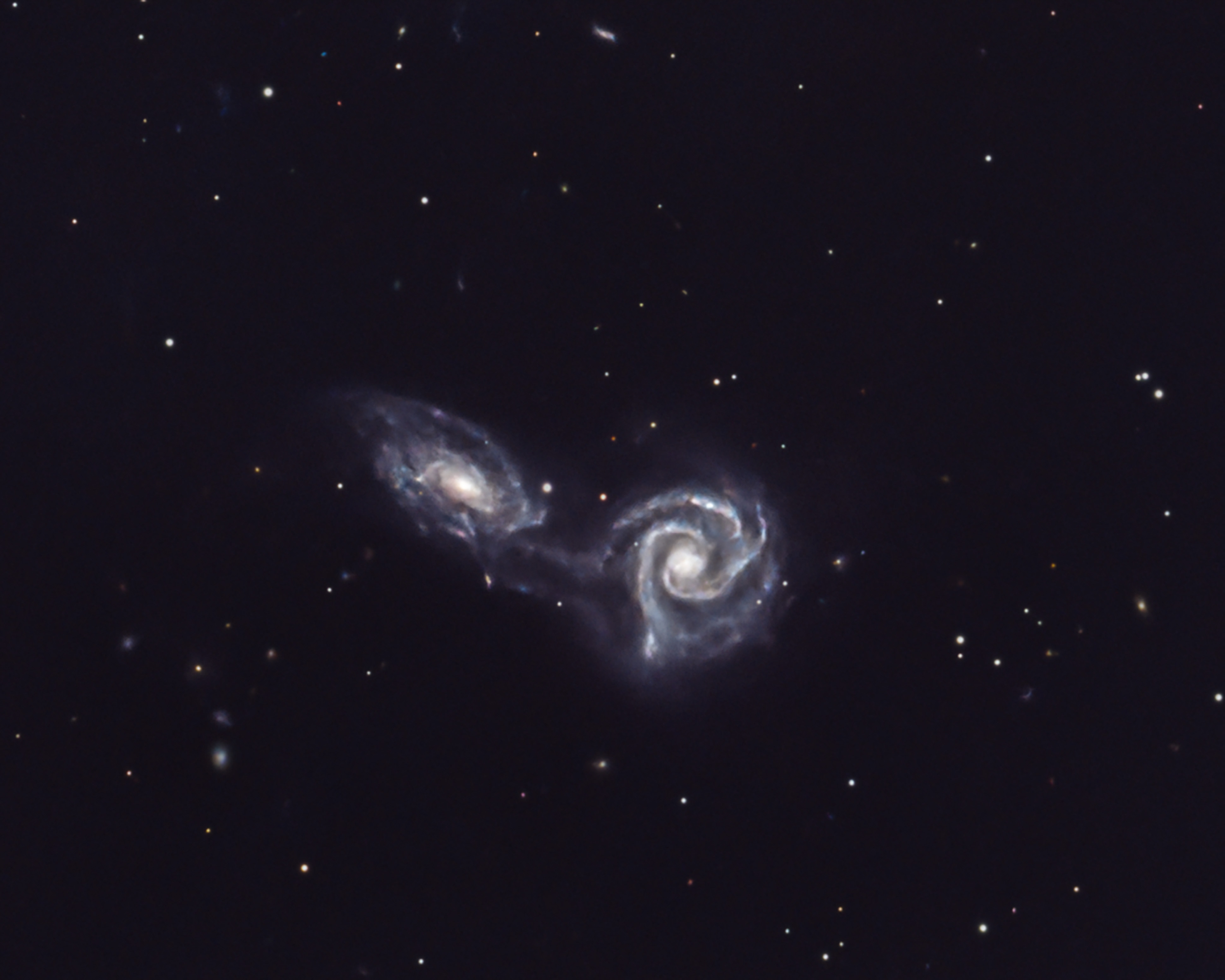
| Object | Arp 273, The Rose, UGC 1810 and 1813 |
|---|---|
| Date | November 24, 2024 and December 2, 2024 |
| Constellation | Andromeda |
| Distance | 300 Million Light Years |
| Magnitude | 13.7 |
| Comments | NGC 7320 (‘blue’ galaxy) is not part of the group and is a local galaxy about 39 MLY distance |
| Exposure | 120 subs at 2 minutes, total exposure: 4 hours |
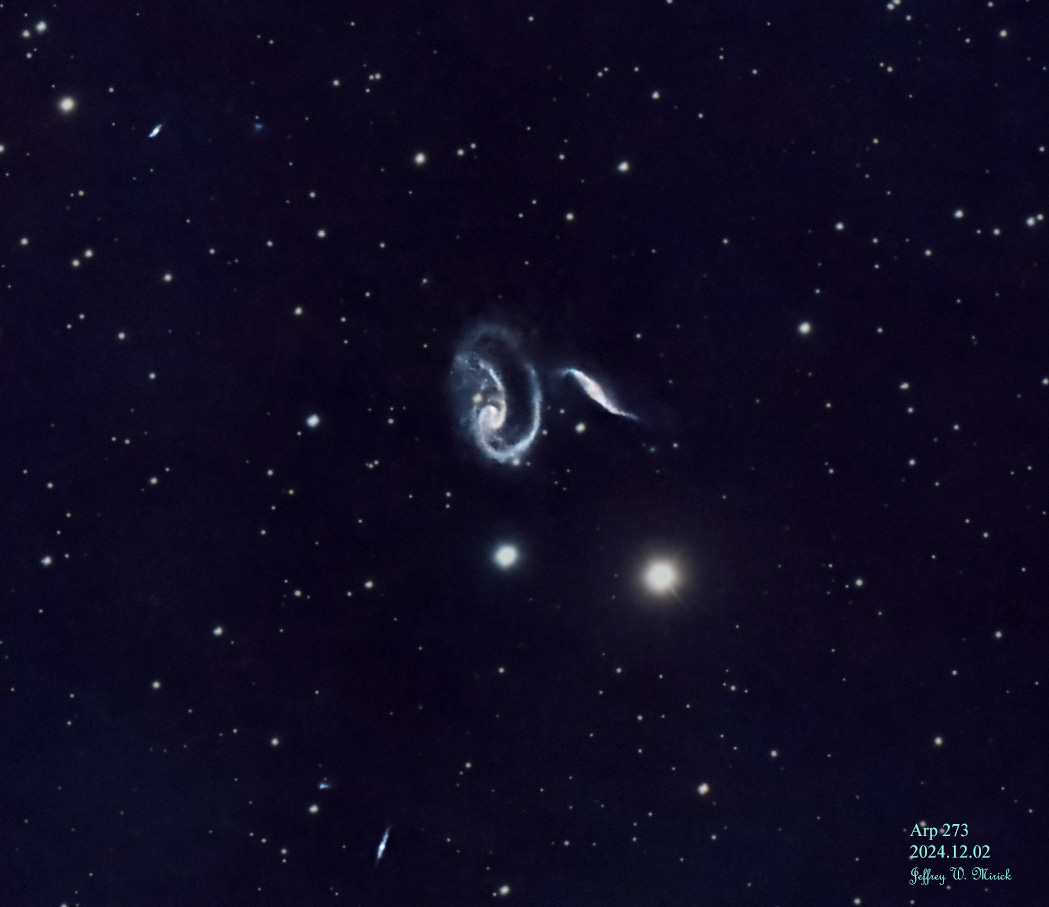
| Object | Arp 319, The Stephan's Quintet |
|---|---|
| Date | November 21 and 22, 2024 |
| Constellation | Pegasus |
| Distance | 210 to 340 Million Light Years |
| Magnitude | about 13 to 17 for the faintest |
| Comments | |
| Exposure | 112 subs at 2 minutes, total exposure: 3 hours 44 minutes |
